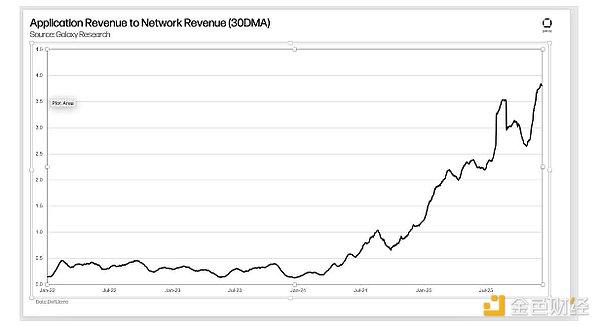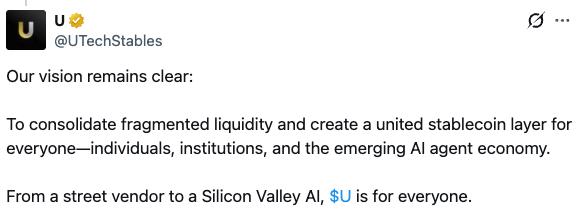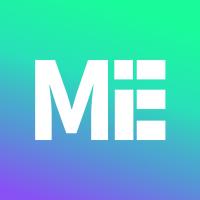We talked about the future of millions of blockchains, some of which are general-purpose, but the vast majority are application-specific.
The advent of modular blockchains, Ethereum’s Rollup-centric vision, and Vitalik’s acknowledgment of centralization for scalability in his Endgame basically made this vision of the future inevitable.

So we conclude that there will be millions of application-specific modular chains in the future, but how are they built?
Through Rollups-as-a-Service (RaaS), of course.
Many application teams don't want to think about running infrastructure. Just as AWS abstracts away the complexities of hosting servers, RaaS projects are doing the same for building and maintaining blockchains.
In the near future, deploying a new chain will be as simple as creating a new web page or scaling an application up and down via Docker containers and Kubernetes.
In the past 6 months alone, we have seen the release of a series of RaaS projects that are building lightweight, configurable low-to-no-code offerings of Rollup aggregation products.
RaaS: Rollup as a Service
Below is an exhaustive list of all current Modular Blockchain Solutions/ Rollup-as-a-Service projects:
OGs: Cosmos and Substrate
Both the Cosmos SDK and the Substrate SDK have been around for years, enabling developers to create their own sovereign chains (thus not technically modular) or in the case of Substrate, share security by becoming parachains connected to the Polkadot relay chain.
Alt-L1s
Polygon and Avalanche are a big part of the Alt-L1 narrative in early 2021. They have prototype modularity built in: Polygon Edge and Avalanche subnets.
Notably, Avalanche has partnered with games like Crabada and DeFi Kingdoms to create their own game-specific subnets.
Polygon expands Edge's reach - now known as Polygon Supernets. Using Supernet, Dapp teams can leverage existing Polygon PoS validator stakes and create a separate application-specific environment. Over time, Polygon Supernets will also enable Dapp teams to create ZK Rollup using Polygon ZK technology.
Ethereum Maxis A number of L2s on Ethereum are considering what application-specific Rollups look like on their network, notable among them are Scroll, Fuel, Mantle, Boba, Metis, Consensys' zkEVM, and Loopring.
OPStack, Optimism's Modular Stack, is one of the designers of Base (there are other forks like Minecraft games). They have a super chain vision of a shared sequencer, which is to use the shared sequencer to provide synchronization and atomicity between Rollups-.
The OP Labs team has a vision where L2s becomes the "experimental layer" of Ethereum. For example, Ethereum developers can easily launch a new Rollup to test new ERCs and EIPs in production - rather than waiting for full legislation to update Ethereum L1, or even other more mature L2 updates such as the Optimism Mainnet .
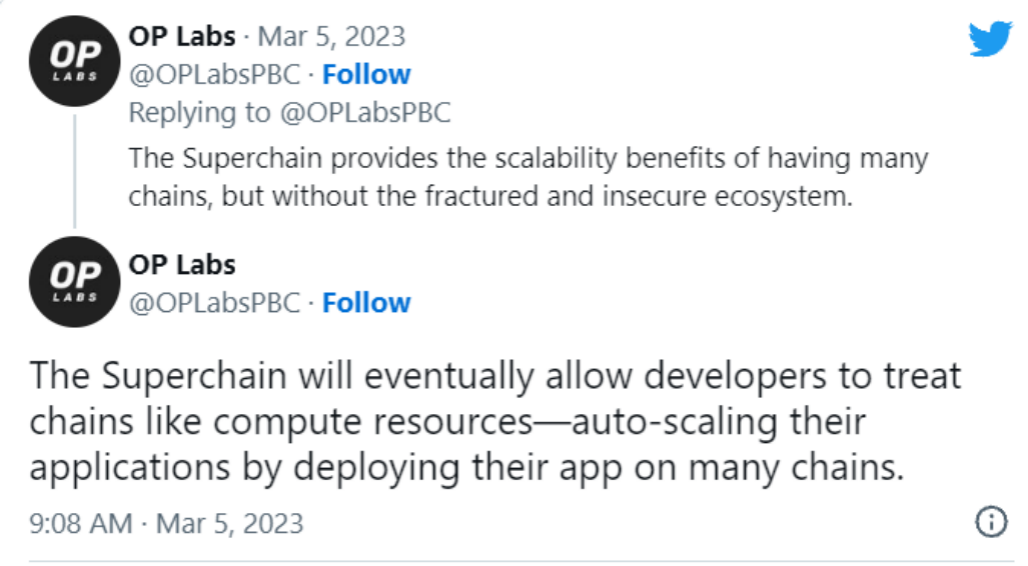
Arbitrum AnyTrust, and its first game-optimized deployment, Nova, is Arbitrum's modular solution - allowing the use of Nitro, Arbitrum's execution layer, with off-chain data availability using DAC and fault tolerance released on Ethereum L1.
Last week, Arbitrum announced the launch of Orbit — a developer solution to launch L3 on Arbitrum as a full Rollup or AnyTrust instance — alongside the AirDrop plans. Orbit, paired with Stylus, allows developers to build applications in languages such as C, C++, and Rust, in addition to the EVM language Solidity. Offchain Labs envisions L3 being useful for rapid experimentation: permissionless Rollup, introducing new governance mechanisms, making modifications to Nitro, etc.

Slush is built on top of StarkNet and provides an SDK to build zkVM L3 on top of StarkNet. Starkware also proposed the concept of fractal expansion, which can be said to be the initiator of the discussion on L3.

A blog post from Starkware mentions that zkSync is also considering fractal scaling and L3 - they call them Hyperchains. Utilizing LLVM, Hyperchains are fractal-like instances running in zkEVM that can run in parallel on the L1 mainnet, with a common settlement.
Hyperchains can be deployed permissionlessly by anyone, using a customizable, modular zkEVM chain stack powered by the same zkEVM engine as the main zkSync L2. Developers can choose between different virtual machines (such as MoveVM), different sequencer designs, and data availability (zkRollup, zkPorter, and zkValidium).
Additionally, the Matter Labs team envisioned a vision of an ephemeral execution environment for Hyperchains. For example, it is possible to start a Rollup to mint millions of NFTs cheaply, then bridge the NFTs to another execution layer, then close the temporary Rollup.
Caldera has a vision of one-click modular chain deployment, initially starting with optimistic rollups. They have a live demo of Rollup on the testnet, which is very good, and have already provided production services for game customers such as Curio on the mainnet.
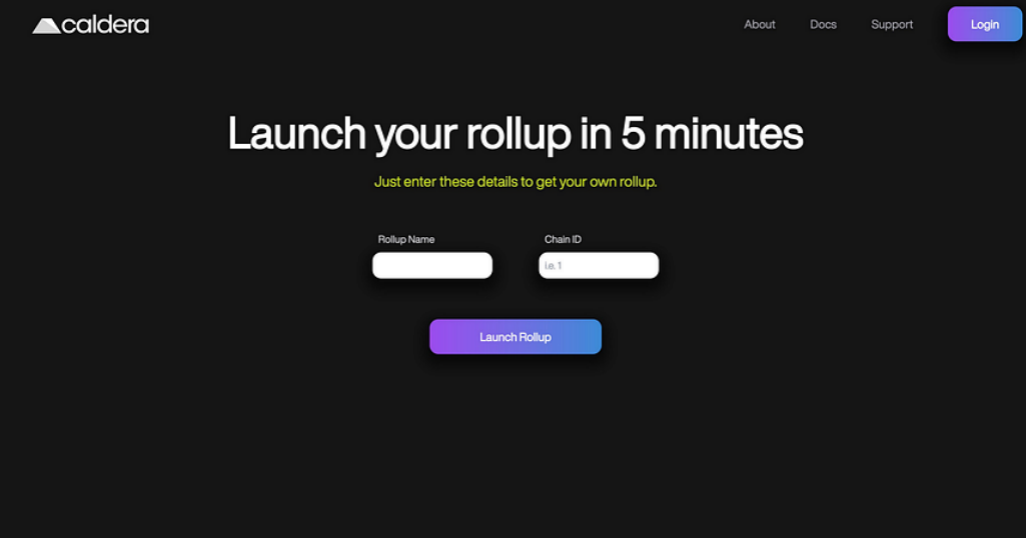
Stackr is still in its early days, but it's a winner at ETH Global and looks very promising. They hope to enable the creation of "hybrid applications" through "micro- Rollup", giving Rollup the freedom to choose execution, data storage, and sufficient decentralization.
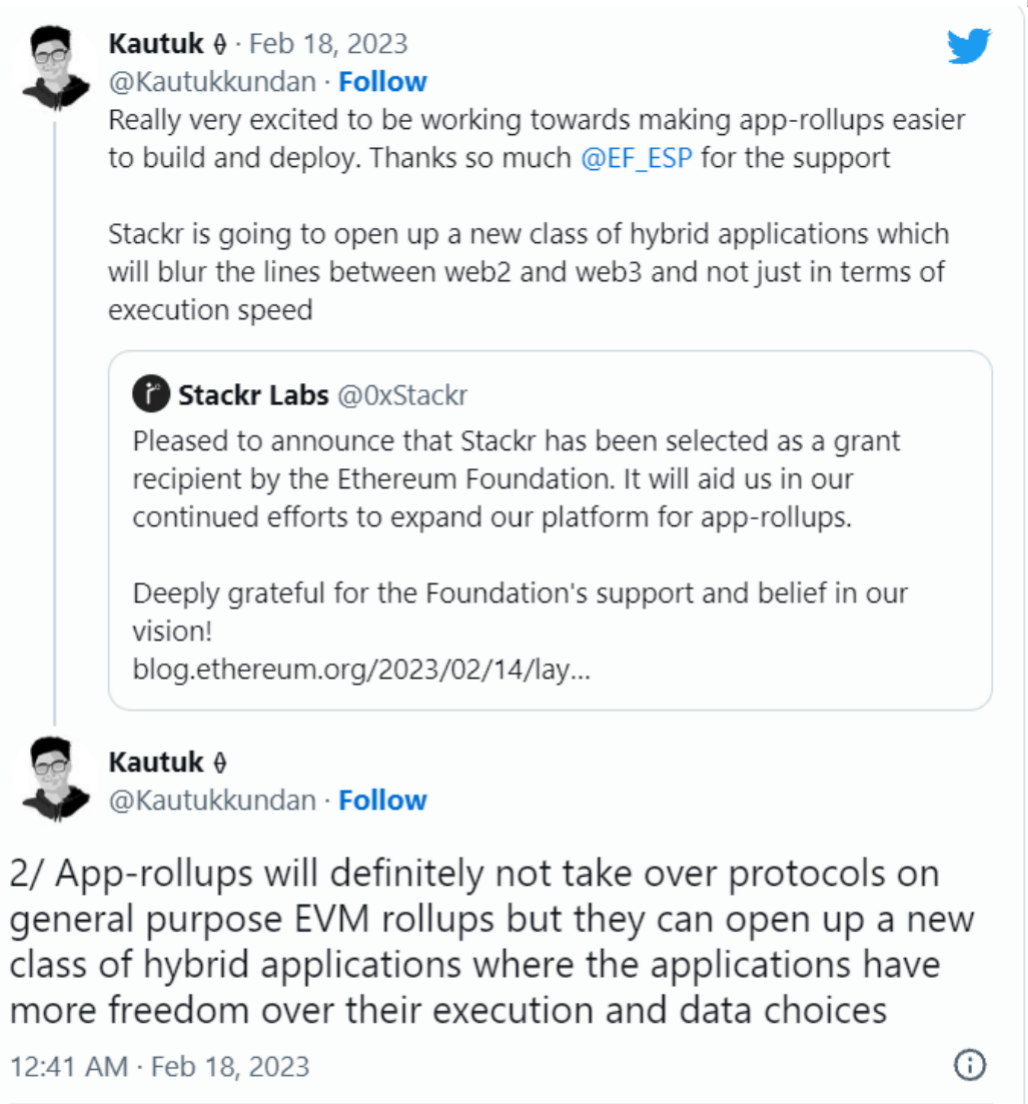
Not much information about Conduit, but it is related to Optimistic Rollup's OPStack. They are also committed to enabling a "one-click deployment" experience.
Cosmonauts
Dymension's RDK allows the creation of RollApps on Cosmos, connected to the Dymension Hub. Dymension RollApps are built using the same tools as the Cosmos SDK - the main difference is replacing the consensus module with a blockchain module that does not require consensus (i.e. no validator conversion logic) - expected to be more reliable than normal Rollup due to no data release bandwidth bottleneck scalability.
Dymension Hub will allow hub-and-spoke connections between RollApps and other IBC-enabled chains - not only benefiting users, but also increasing Dymension Hub's status as an autonomous network.
Saga is an elastic blockspace platform that allows developers to deploy fully secure, decentralized "slices" on demand - leveraging the security of its master validator set.
Saga supports small chains of multiple underlying platforms - including Cosmos application chain, Celestia Rollup and Polygon Supernets. Like other RaaS projects, Saga focuses on gaming use cases and supports whatever technology the gaming industry requires.
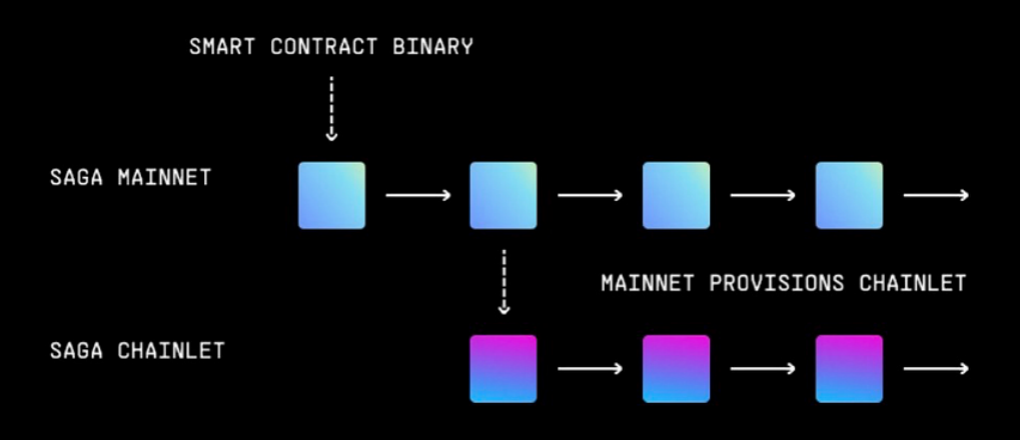
Initia is a modular solution aimed at the gaming market. They utilize MoveVM for the execution layer, ZK proofs, and the Cosmos SDK for fast settlement and data availability. Initia plans to enrich its L1 ecosystem to achieve combination and cross-confluence between L2, calling it "The Lobby Thesis".
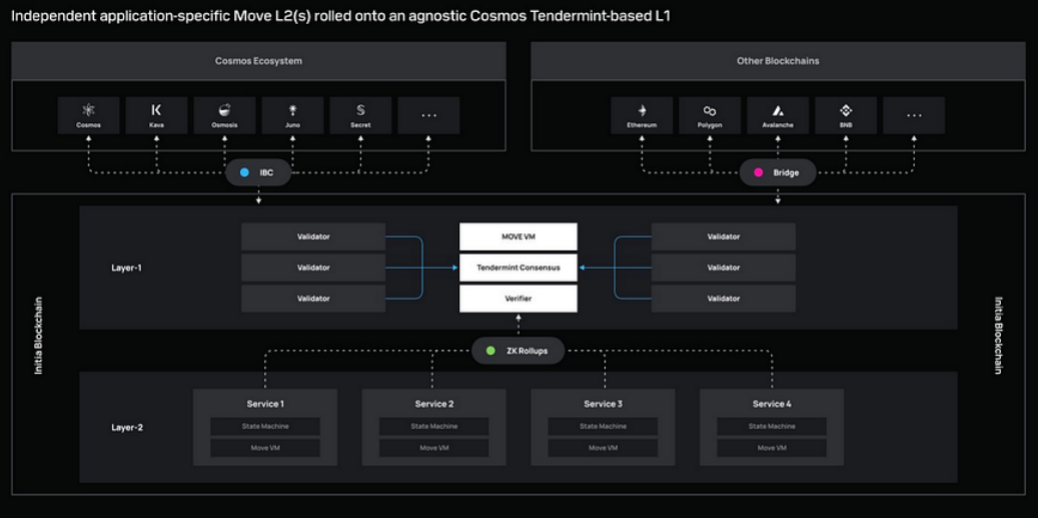
Evmos plans to develop the Evmos SDK to enable developers to easily integrate with Ethermint and launch new EVM-compatible application chains on Cosmos.
Berachain recently announced Polaris, a redesigned blockchain framework that allows integration of the Ethereum Virtual Machine with any consensus mechanism, initially it will be integrated with the Cosmos SDK/Tendermint. The team will also build other developer tools and infrastructure to make building with Polaris seamless, such as block explorers and wallets.
Eclipse is building a settlement Rollup that allows SVM and other VM execution layers to be built on top of it, using Cosmos and Polygon and eventually other L1s to provide data availability.

Celestia
Celestia's Rollkit (formerly Rollmint and Optimint) is a modular framework for Rollups that allows developers to create Sovereign Rollup or Optimistic Rollups (coming soon) with modular data availability components. Rollkit has a generic DA layer interface that can be plugged into any DA layer, including the controversial integration with Bitcoin.
Astria is settlement Rollups using Celestia as the execution layer for data availability.
Fractal is a hub for building zkVM Rollups.
Sovereign Labs is building the Sovereign SDK for the "Internet of Rollups", using any L1 to provide data availability and ordering, and using any LLVM-compatible proof system for zk-proving (such as RiscZero or Nil Foundation) to create sovereign zk-rollups.
Other teams also include:
Artesi is building “full-stack” Rollups, including off-the-shelf tools like block explorers and MPC wallets.
Alt Layer focuses on creating "lightning layers" for time-bound optimistic Rollpus. They are using Substrate SDK.
Cartesi (not to be confused with Artesi) is creating a blockchain SDK for Optimistic Rollups that has a Linux operating system compiled to Risc-V.
Opside offers zk-rollups as a service, using its innovative "three-tier" platform.
Now let's see who is building the new chain. It can be divided into three major categories: games, DeFi and creator economy.
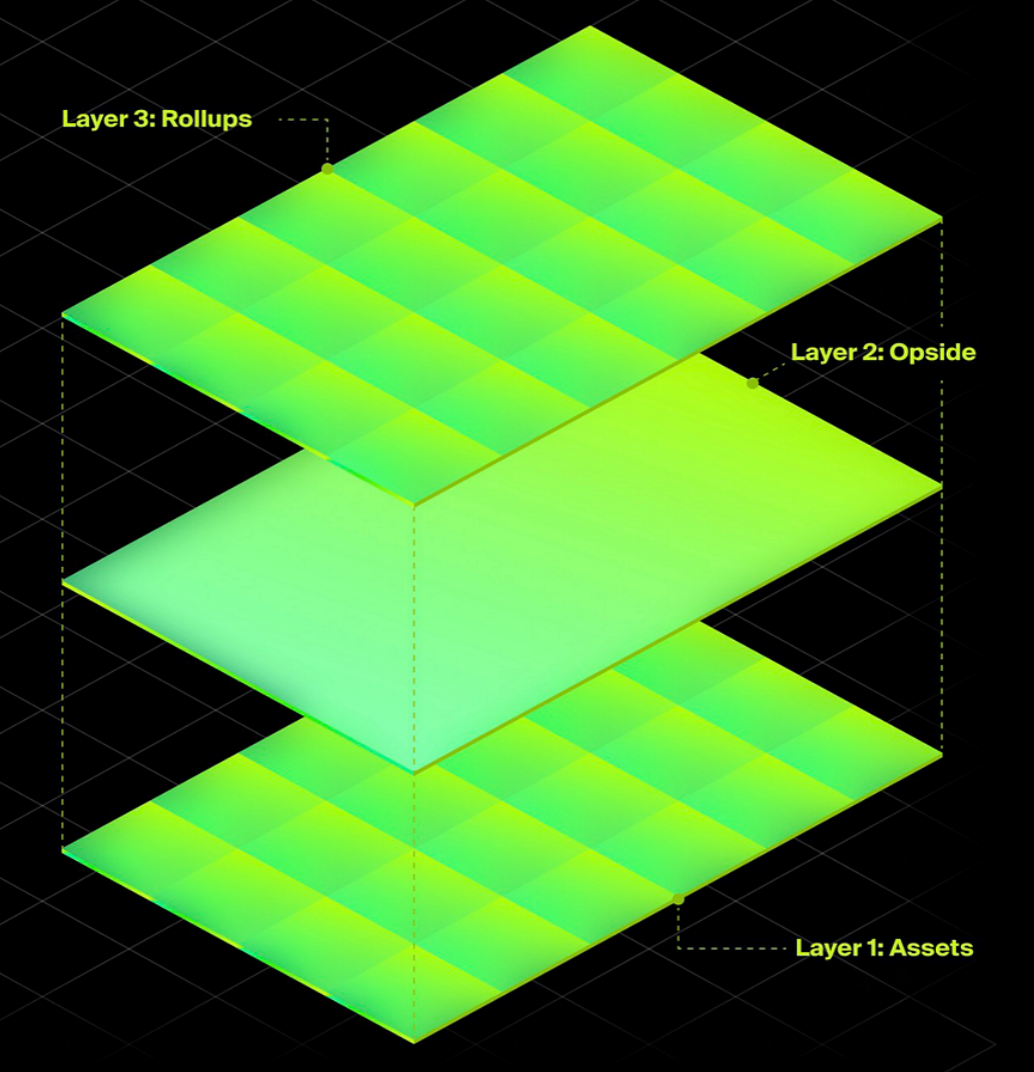
Dapp Team
Ok, we finally talked about all the solutions to make building modular chains easier, but who exactly is building new chains?
There are three main categories: Gaming, DeFi, and Creator Economy.
game
Gaming is the most cited use case among RaaS projects, many of which focus solely on gaming use cases.
GameFi has always been a favorite in the crypto space, with "game chains" like Efinity, Flow, Enjin, ImmutableX (first StarkEx, now on Polygon zkEVM) and others appearing over the years.
It makes sense. Games require completely different parameters than financial applications: lower security, higher throughput, higher storage capacity, etc.
RaaS projects have also joined the race to develop Web3 games.
decentralized finance
More specifically, standalone financial applications.
Applications that do not require a shared execution layer work well in a modular context. Use cases like payments (Terra’s Chai 🥲) and Derivatives(eg, dydx, perps, structured products) can be considered.
creator economy
It's a mixed bag, but Web3 Social, Token Access, Community/Social Token projects are also actively developing their own application-specific modular blockchains.
It also makes sense, since these applications are also self-contained and do not suffer from the lack of composability that currently persists Cross-chain.
long road ahead
I am very bullish on the growth of blockchain utilizing modular stacks and Rollups as a service.
However, I also recognize that we are still — and it seems to have been throughout my five years in crypto — early days.
Modular mainstays — such as Fuel, Celestia, and zk rollups — are still not out. Most (announced) RaaS projects are either in Alpha or manually configured permission deployment.
Not to mention the naivety of application protocol teams who are considering deploying their own Dapp. As it stands, building an application-specific modular chain is not an obvious choice for any development team:
When moving away from a shared state machine, connectivity and compositionality are lost.
Existing infrastructure such as RPC endpoints, block explorers, and wallets are not directly usable, and running the infrastructure yourself is expensive.
Liquidity is very fragmented and requires building a community from scratch. No network can inherit effort from the base chain.
In the end, there are still concerns that this is just a game of "pick and shovel from the top down".

In addition to strong developer tools, the space needs to have iconic apps that will bring a wave of new users in the next bull market. They need to solve the real user pain points that will appear in the future of millions of chains: involving composability, Cross-chain value transfer, and even the abstraction of the entire chain.
This is my next endeavor to solve
source:
Messari RaaS Research Report Norswap Threads Complete Guide to Delphi Rollups




